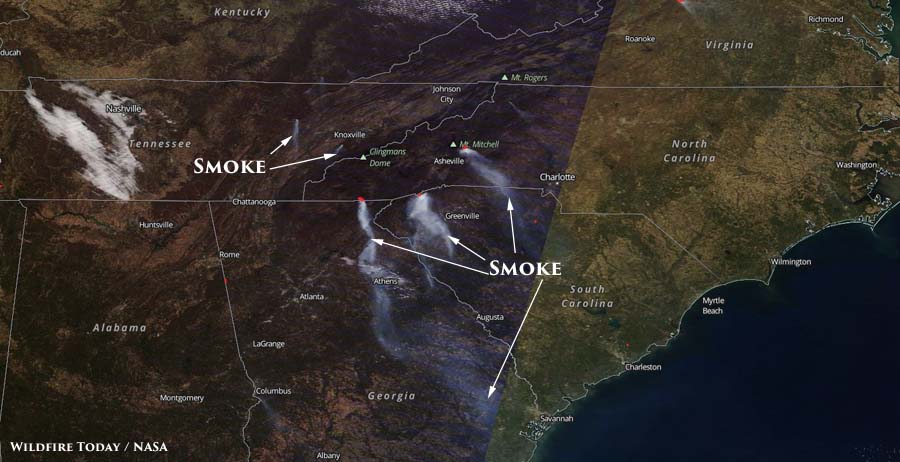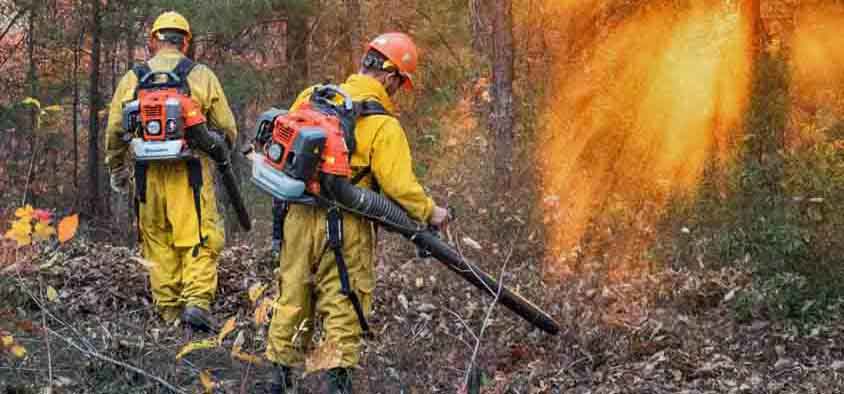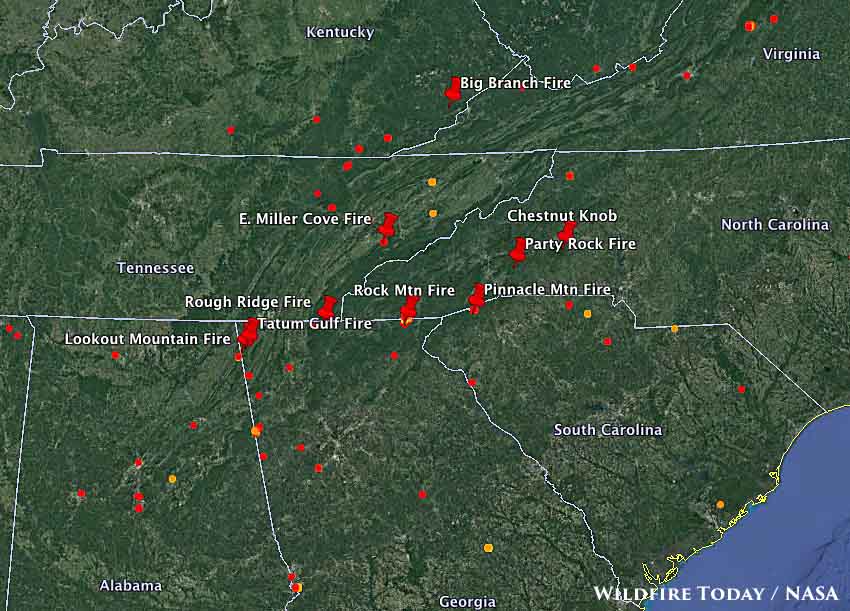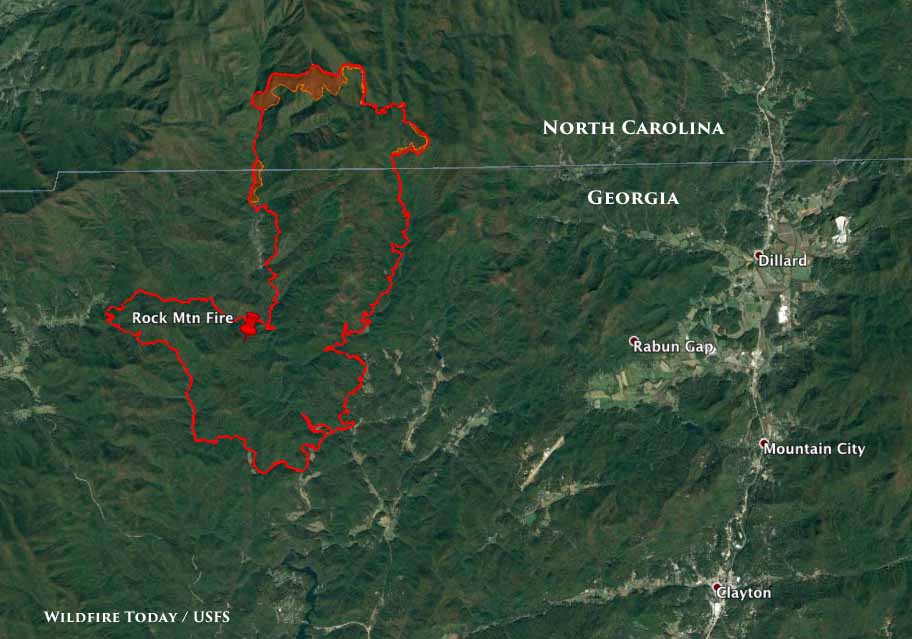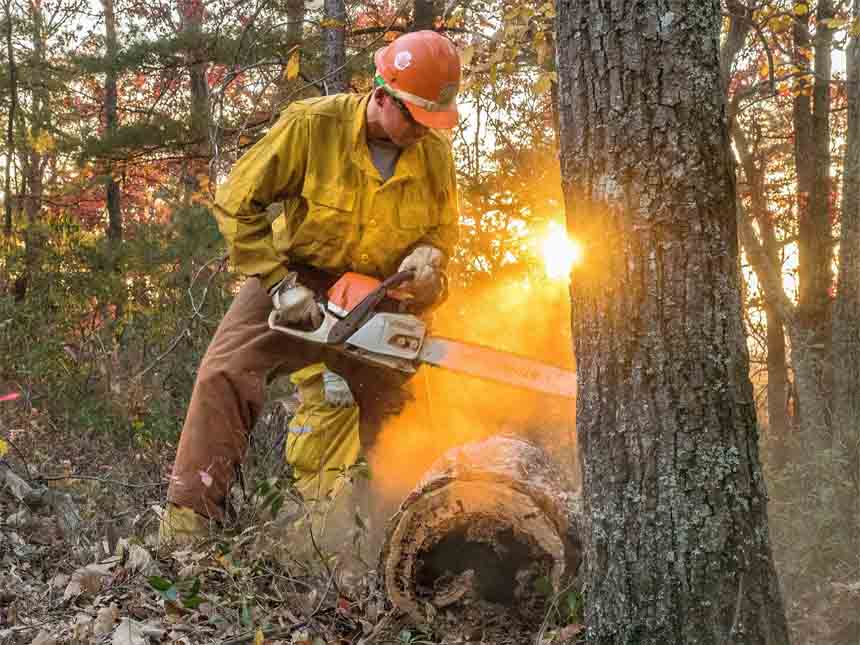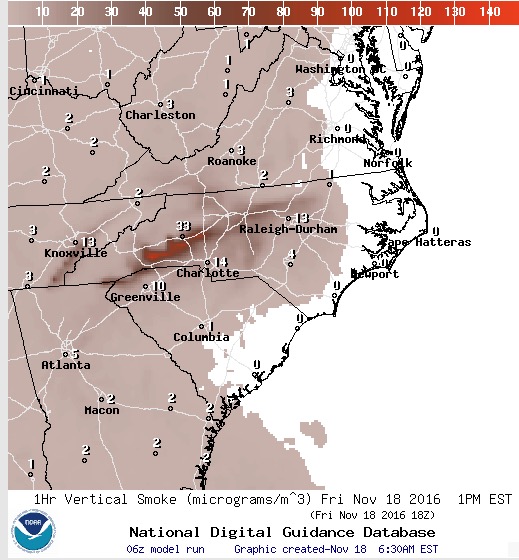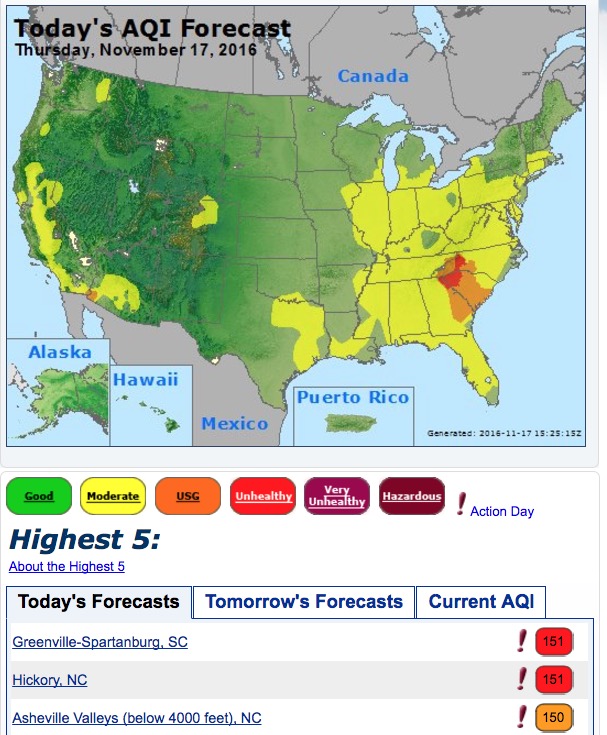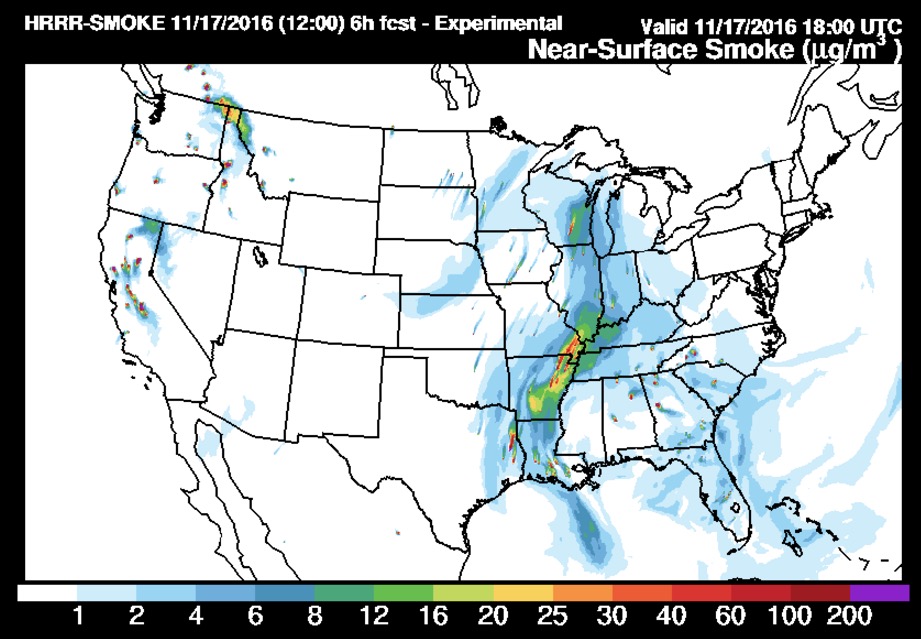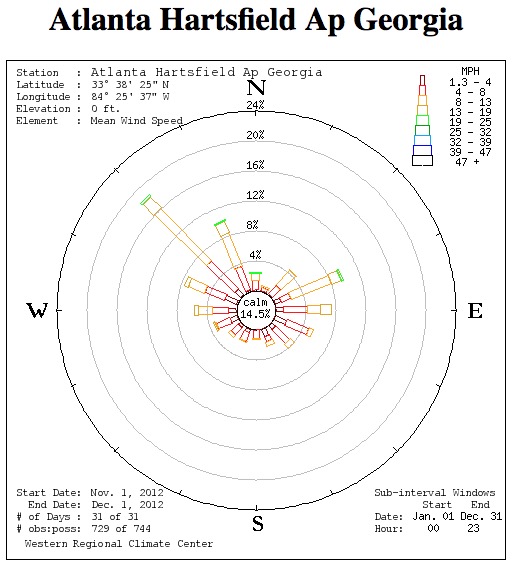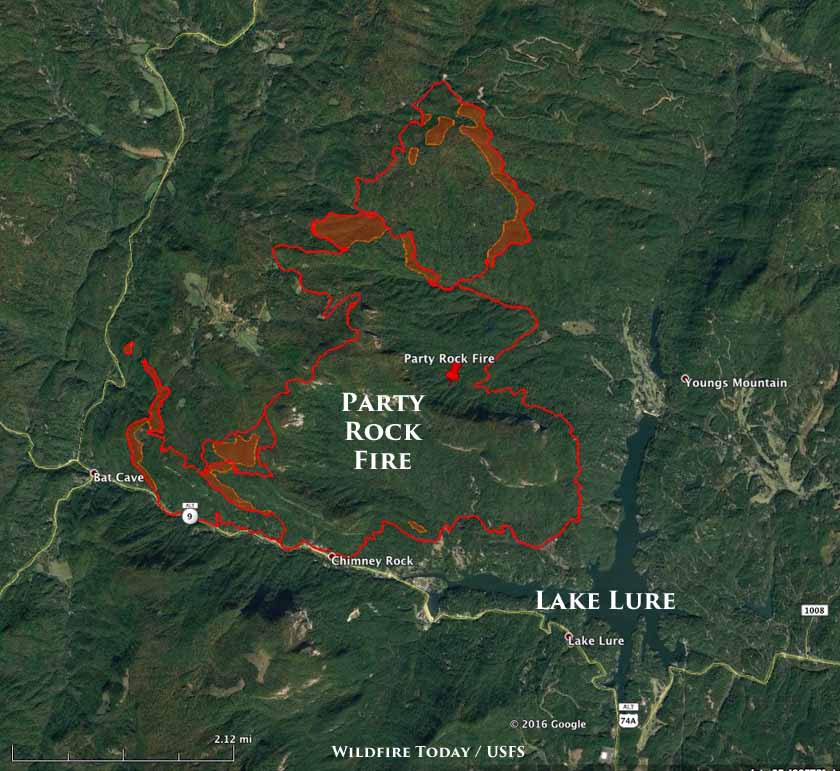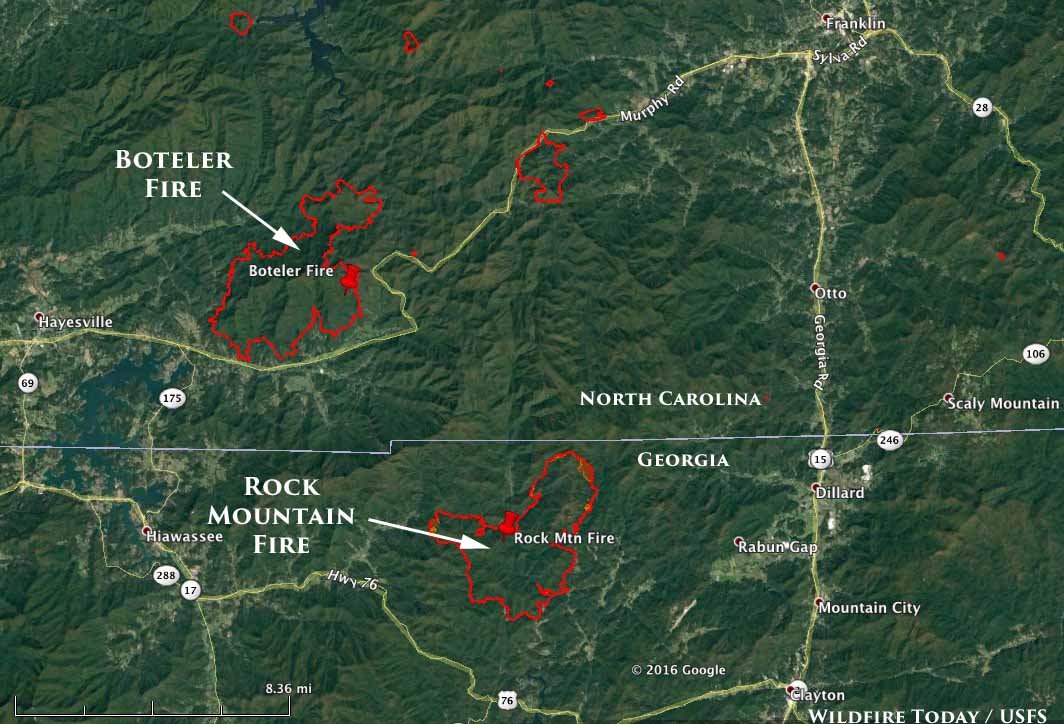Above: Three fires were generating the smoke detected by a satellite on November 27: Rock Mountain, Camp Branch, and Pinnacle Mountain Fires.
The wildfire activity in the southern states has slowed a bit over the last few days. The day before Thanksgiving there were about 4,100 personnel assigned to fires in the area. By Saturday that number had decreased to 3,400.
The smoke generated by fires that has plagued residents for weeks has also diminished considerably. Today’s satellite photo, above, only shows three fires that are creating enough smoke to be seen from hundreds of miles overhead. These are the Rock Mountain (Georgia and North Carolina), Camp Branch (North Carolina), and Pinnacle Mountain Fires (South Carolina).
Just five fires in the Southern Geographic Area reported size increases on Saturday — a major change from recent weeks.
Rock Mountain Fire
The Rock Mountain Fire in Georgia and North Carolina grew by 2,578 acres in the last 48 hours and now has covered 20,647 acres, which is considered huge in this part of the country. It has spread to within 4 miles of Otto, NC and 4 miles of Dillard, GA. The fire was mapped Saturday by Colorado’s MultiMission Aircraft. Firefighters reported active surface spread in hardwood leaf litter in all directions, aspects and elevations on Saturday. Where it was not impacted by suppression it spread for half a mile. About 130 structures are threatened.
Camp Branch Fire
The 1,483-acre Camp Branch Fire is 9 miles west of Franklin, NC, an increase of 120 acres over the previous report. About 113 personnel are assigned to this fire which currently threatens 140 structures. On Saturday firefighters successfully conducted burnout operations on the northwest and southeast sides.
Pinnacle Mountain Fire
The Pinnacle Mountain Fire in Table Rock State Park added 217 acres Saturday to bring the total up to 9,147 acres. It is in northwest South Carolina 9 miles south of Brevard, North Carolina. The incident management team reports that 255 personnel are assigned and 1,133 structures are threatened. A burnout operation on Saturday brought the perimeter to the containment lines on the west and north sides of the fire.
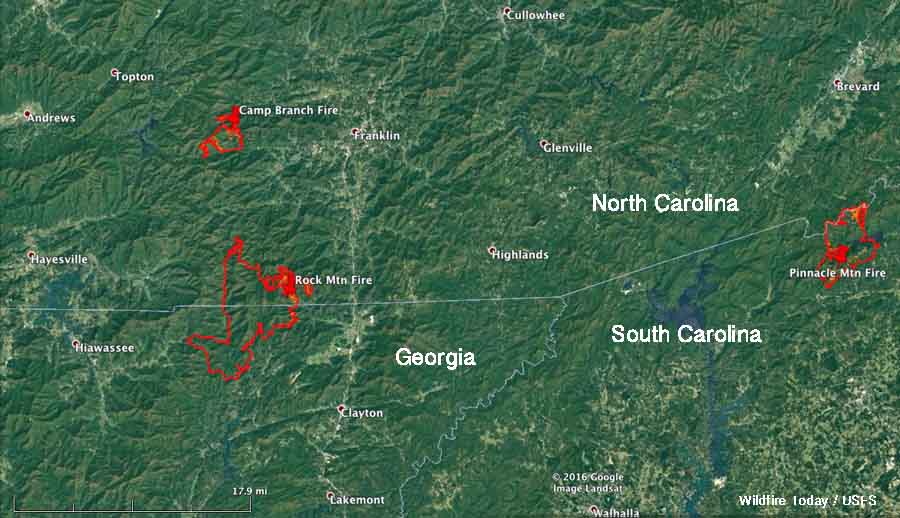
OTHER FIRES
Clear Creek Fire
The Clear Creek Fire is 7 miles northwest of Marion, NC. I has burned 2,986 acres, an increase of 363 acres. About 352 structures are reported to be threatened. The fire is staffed by 489 personnel.
Mount Pleasant Fire
The Mount Pleasant Fire, 9 miles west of Buena Vista, Virginia has blackened 11,200 acres, an increase of 200. High humidity Friday night aided suppression efforts, but that was followed by strong winds on Saturday. Area road and trail closures, including part of the Appalachian Trail, are in effect. The fire has burned across the Appalachian Trail between Road 507 and Cow Camp Gap. The increase in acreage was the result of a large burnout operation on Saturday.
For the latest articles at Wildfire Today about how smoke from the wildfires is affecting various locations in the South, check out the articles tagged “smoke”.



